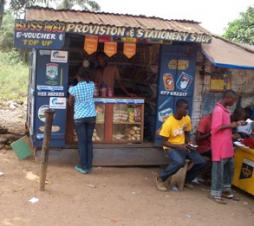branchless banking
Posted by VivianOnano on Jul 01, 2011
Branchless Banking 2010: Who’s Served? At What Price? What’s Next? data sheet 1549 Views
Author:
McKay, Claudia; Picken, Mark
Abstract:
This Focus Note evaluates the evidence from 18 branchless banking providers with a collective total of more than 50 million customers (see Table 1) to answer three questions:
- Does branchless banking reach large numbers of low-income and unbanked clients?
- Are prices for branchless banking lower than prices for traditional banking for the kinds of transactions low-income and unbanked people want to do?
- What other services do these customers want from branchless banking?
The answers to these questions have implications for the business case, customers, and those who hope that branchless banking can boost financial inclusion.
The data offer some answers. On the question of scale, branchless banking can reach large numbers of the unbanked relatively quickly. CGAP looked at the outreach of eight providers globally for which good data were available by drawing on 13 studies that surveyed 16,708 branchless banking clients. The eight providers average 3.73 million active registered users, of which 37 percent or 1.39 million were previously unbanked.Five of the providers reach more previously unbanked clients than the largest microfinance institution (MFI) in the provider’s country—on average, 79 percent more.
These five branchless banking providers grew quickly, surpassing the largest MFI in number of customers within three years. This is not to suggest branchless banking is replacing or eclipsing MFIs. The services branchless banking typically provides (payments) are complimentary to MFI microloans: both meet a widespread need for which clients are willing to pay.
Posted by Juliel on Jun 27, 2011
Financial Education: A Bridge Between Branchless Banking and Low-Income Clients data sheet 765 Views
Author:
Cohen, Monique, Danielle Hopkins and Julie Lee
Abstract:
This paper examines the rapid evolution of branchless banking technologies and development of financial education as a tool to help low-income households better manage their money.
While focusing on getting delivery systems right, promoters of branchless banking often lose sight of the consumer. Despite recent enthusiasm regarding these new banking services, uptake and usage has been limited, and often does not include many of the poor. Reasons for lower usage rates among low-income populations include:
- Lack of familiarity with banking services;
- Limited trust in new financial delivery systems;
- Lack of understanding and experience using the technologies.
However, low-income households are willing to cross the digital divide and conduct their financial transactions through branchless banking. Higher usage is possible, but will require financial education to facilitate this process. This can be delivered through a variety of channels, such as radio, print media and class room training.
Finally, the paper presents a case study from Malawi which demonstrates the viability of branchless banking when potential clients have proper knowledge of how to use it and stresses that well-conceived financial education programs will achieve this aim.
Posted by AnneryanHeatwole on Apr 29, 2011
In today's Mobile Minute, we look at CGAP's coverage on branchless banking and micro-insurance, report on Nielsen and mobile privacy concerns, look at how the New York Times investigates Google's mobile approach and how smartphones are collecting data about cell towers and Wi-Fi hot spots. Lastly, a meetup for those interested in mHealth and ICT4D.
Interested in how branchless banking and micro-insurance can work together? GCAP has a roundup of three different organizations (from Ghana, the Philippines, and Kenya) that have paired mobile banking and micro-insurance in order to reach the unbanked and uninsured.
Posted by MarkWeingarten on Feb 22, 2011
Towards End-to-End Security in Branchless Banking data sheet 1411 Views
Abstract:
Mobile-based branchless banking has become one of the key mechanisms for extending financial services to disenfranchised populations in the world's developing regions. One shortcoming of today's branchless banking systems is that they rely largely on network-layer services for securing transactions and do not implement any application-layer security. Recent attacks on some of the most popular branchless banking systems show that these systems are not end-to-end secure.
In this paper, we make the case for designing mobile-based branchless banking systems which build security into the application layer of the protocol and guarantee end-to-end security to system users. Our main contribution is a threat model which effectively captures the goals of end-to-end authenticated transactions in branchless banking. This model, besides incorporating the obvious external threats to a protocol, also accounts for the possibility of insider attacks - those mountable by banking agents or other human intermediaries in the system. We then provide recommendations for solution design based on the security requirements of our model and the infrastructural constraints under which branchless banking systems operate.
Posted by KatrinVerclas on Nov 01, 2010
Is mobile money living up to the hype? Does it provide more and better financial services for low-income and poor people? Our great friends over at CGAP, the definitive source on credible research on mobile money and branchless banking, have gathered data on 16,000 mobile money customers in seven coutries to understand better how far branchless banking is reaching the unbanked. The results are published in a new CGAP paper.
As fas as we know, this is the first time such an extensive data set has been collected. It sought to answer three questions: Is mobile banking reaching poor customers? Is it more affordable than traditional banking? And lastly, do customers get what they want?
The CGAP researchers looked at 18 branchless banking providers with more than 50 million customers in 10 countries. What did they find?
